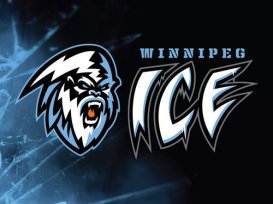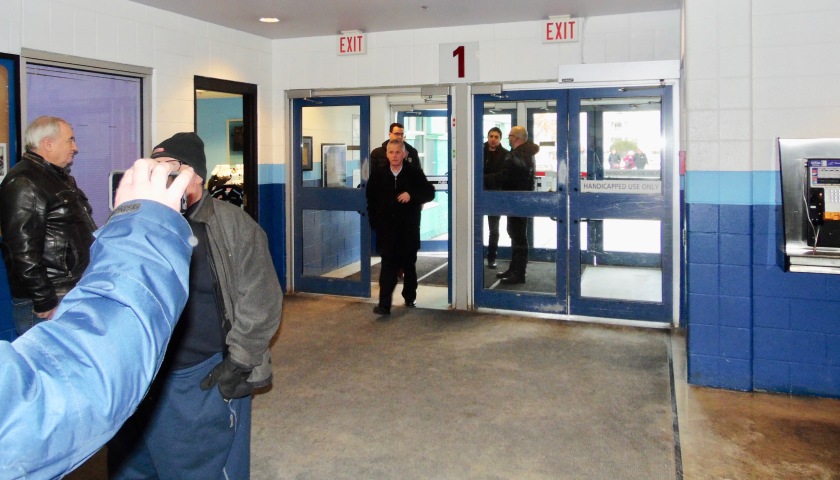Ron Robison, the WHL commissioner, was in Cranbrook on Tuesday morning to provide the last rites to the Kootenay Ice.
The WHL’s Cranbrook-based franchise is dead after 21 seasons. It will be reborn in  Winnipeg after it plays nine more home games in Cranbrook’s Western Financial Place.
Winnipeg after it plays nine more home games in Cranbrook’s Western Financial Place.
In Winnipeg, the franchise will continue to be known as the Ice and will play out of the WHL’s East Division, something that will result in the Swift Current Broncos moving to the Central Division. That allows each division to remain at six teams.
The Winnipeg Ice began taking $50 non-refundable deposits this morning, noting that the team will spend a couple of seasons in the U of Manitoba’s Wayne Fleming Arena and that seating will be limited. That deposit will get you on “a priority list for season-seat membership,” according to a news release at winnipegice.ca.
As for ticket prices, the news release stated: “Season-seat pricing will be communicated

prior to the seat-selection period. At this time, no decision has been made on whether fans can choose a multi-year season-seat commitment option.”
Greg Fettes and Matt Cockell, who purchased the Ice from the Chynoweth family prior to the 2017-18 season, joined Robison at the news conference that was held in WFP and lasted about 30 minutes.
They had met with members of the business community earlier in the morning in an event that one observer told Taking Note appeared to be by “invite only to friendly business people.”
That observer said the message was that “we are apologetic that it didn’t work . . . and we had to make a business decision,” and that the situation was looked at from a league point of view “for several years and we came to the conclusion that it wasn’t going to work.”
When the scene shifted to the arena for the news conference, there were a few fans present who had hoped to be allowed in. However, they were told that it was for media only. Someone did stream it on Facebook, so there were people elsewhere in the building who were able to watch.
According to two Taking Note correspondents who were in attendance, Robison began by acknowledging that losing the franchise is difficult for Cranbrook fans. He also thanked the fans for their support over the team’s 21 seasons in their city.

Robison pointed out that the previous owners — the Chynoweth family — attempted to increase fan support but that it has continued to slide over the past number of years.
In Robison’s estimation, the Chynoweths, as well as Fettes and Cockell, did everything they could to get things turned around.
Robison tried to take some of the heat off the franchise’s owners by claiming that “this was a Western Hockey League decision ultimately — not the ownership decision — to transfer this franchise. It was a decision made over an eight- or nine-year period of assessment of this market and the ability of this franchise to be sustainable over a long period of time.”
It turns out that the WHL’s board of governors voted on the move in December; Robinson refused to say whether the vote was unanimous.
Asked what this announcement means for other small-market WHL teams, Robison responded that those teams, some of which are community-owned, have to work hard to maintain a balance. He added that moving the Ice isn’t a reflection on the Cranbrook community.

Asked what went wrong in Cranbrook, Robison referred to the WHL playoffs in the spring of 2011, pointing to poor attendance at Ice games, and adding that the attendance has been declining since then.
The Ice won the WHL championship that season, but the announced average attendance for nine home playoff games was only 3,049. Kootenay beat the Portland Winterhawks in the final, winning in five games, but the arena wasn’t sold out. Of course, it didn’t help attendance that a lot of WHL games, including all games in the final, were televised.
Robison also admitted that attendance league-wide has been declining, saying that it has changed overall for most teams, and stating again that the Ice’s owners, past and present, did all they could to boost attendance.
When Fettes was asked how long he has been looking at the Winnipeg market, he said he had been wanting to buy into the WHL long before purchasing the Ice. He added that the Ice’s owners have been studying the attendance situation and began working on moving plans last summer.
As for the chances of another team moving to Cranbrook, Robison told the news conference that there aren’t any teams interested in moving at this time.
The Ice is the first WHL team to change locations since the Chilliwack Bruins were sold and moved to Victoria after the 2010-11 season.
Prior to the start of this season, the Ice launched a season-ticket campaign — Drive to 25 — with a goal of selling 2,500 season tickets, which would have marked an increase of about 600 from the previous season. Instead of an increase, however, the drive resulted in about 1,700 season tickets.
In 2017-18, the first season under new ownership, the team had an announced average attendance of 2,442, up from 1,754 the previous season.
This season, attendance has slipped to an average of 2,218.
In November, a group comprised mainly of local businessmen — the Green Bay Committee — began work to sell tickets and sponsorships on behalf of the Ice. After raising what members said was more than $50,000, the committee ceased operations due to an “absence of active engagement” from the Ice owners, who chose not to attend GBC meetings or provide anything in the way of support.
At the time, John Hudak, the GBC’s marketing director, told the Cranbrook Townsman that “it’s extremely disappointing that we have had to terminate our campaign at this particular time, but it is what it is.”
On Tuesday, Hudak told Taking Note: “I have never ever heard of successful business people turning down business.”
Asked if 2,500 season tickets would have kept the franchise in Cranbrook, Cockell admitted the community had reacted well in Year 1, but ticket sales didn’t show well prior to this season and reflected a reduction in management’s benchmark goal.
But, Cockell added, management had to acknowledge that people in the community have worked hard in support of the team.
Robison, Fettes and Cockell also spent time with Mayor Lee Pratt and some city councillors, but the franchise’s exit from its lease has yet to be negotiated.
It’s believed that the Ice players were given the spiel earlier in the morning. They then were taken to Kimberley for a team outing, so there weren’t any players around the arena to speak with the media following the news conference.
Robison, Fettes and Cockell departed via a side door, so didn’t have any interaction with fans who were waiting in the arena’s foyer.
“Leaving town and throwing the fans under the bus” is how Hudak put it.
With 18 games left, the Ice is 10-32-8. It is ninth in the 10-team Eastern Conference and won’t make the playoffs for a fourth straight season, the second in a row under the ownership of Fettes and Cockell.
Last season, the Ice went 27-38-7, missing a playoff spot by 16 points. This season, it is 22 points from a wild-card spot.
The franchise began as the Edmonton Ice, an expansion franchise that was owned by longtime WHL president Ed Chynoweth. Unable to gain any traction in two seasons (1996-98) in that marketplace, he moved the franchise to Cranbrook where it now is in its 21st season.
The Ice has won three WHL championships (2000, 2002 and 2011) and the 2002 Memorial Cup.
The Ice will play its final game in Cranbrook on March 17 against the Red Deer Rebels.
The Winnipeg Ice’s next game is scheduled for Friday against the Swift Current Broncos in Cranbrook.
JUST NOTES: Taylor Rocca, the WHL’s senior manager, communications, was on hand to do the introductions at the news conference in Cranbrook. Before going to work for the WHL, he was a sports writer at the Cranbrook Daily Townsman and, yes, he covered the Ice. . . . Fettes confirmed at the afternoon news conference in Winnipeg that he has reached agreement to purchase the MJHL’s Winnipeg Blues. The Blues are the only Winnipeg-based franchise left in the MJHL, which once also included the West Kildonan North Stars, St. Boniface Saints and St. James Canadians. . . . If you have been following this story, you will recall that Fettes purchased two domain names — WinnipegIce.com and WinnipegIce.ca — in April 2017. Asked about that, Fettes said that through his business (24-7 Intouch, a global call centre), he has hundreds of domain names. On this occasion, he claimed he and his eight-year-old son were playing around and just made up some more. . . . The website winnipegice.ca was up and running on Tuesday. . . . Robison has long wanted to have a WHL franchise in the capital city of each of the four Western Canadian provinces. Under his watch, the NHL’s Edmonton Oilers were awarded an expansion franchise that began play in 2007-08 in Edmonton, Alberta’s capital; the Chilliwack franchise relocated to Victoria, the capital of B.C.; and now Winnipeg, Manitoba’s capital, has a franchise. Regina, Saskatchewan’s capital, has long been home to the Pats.
